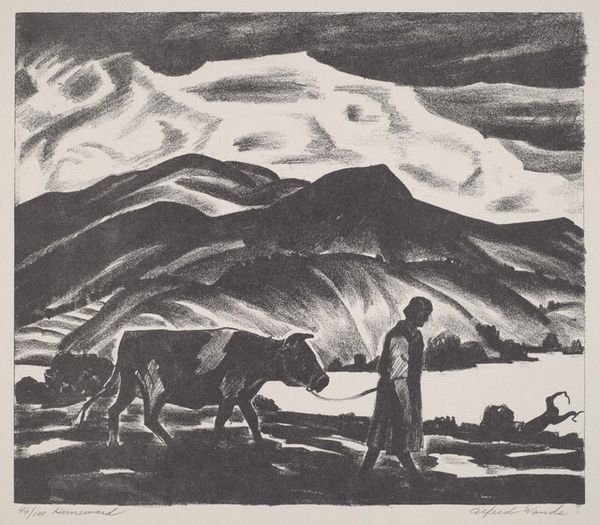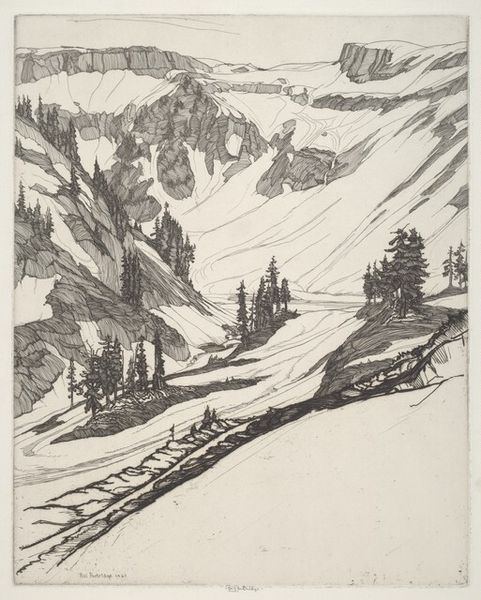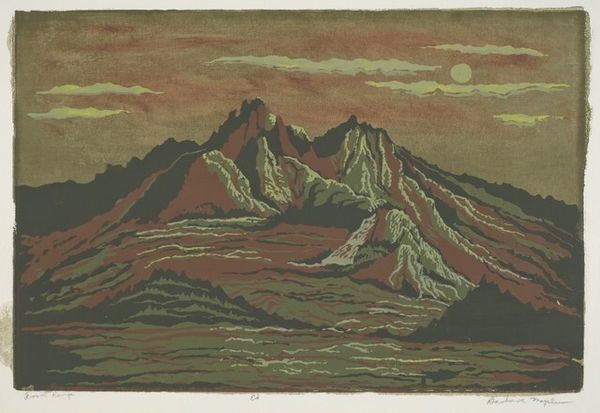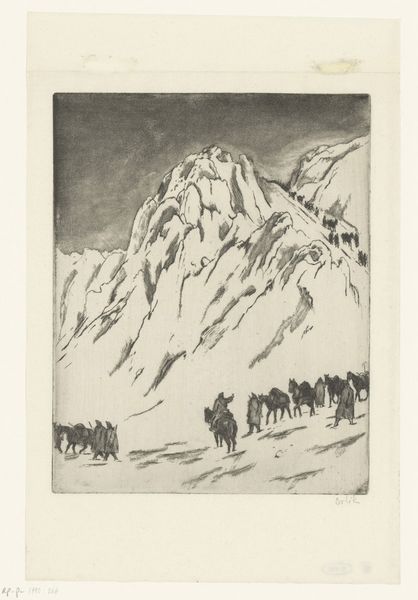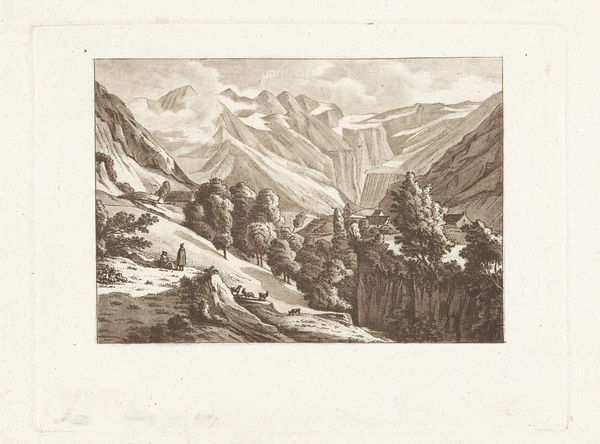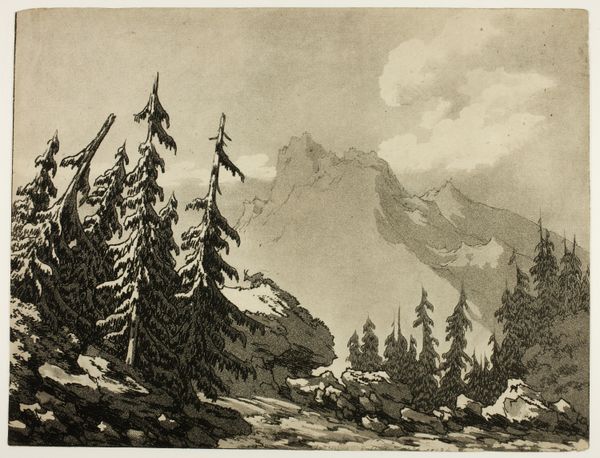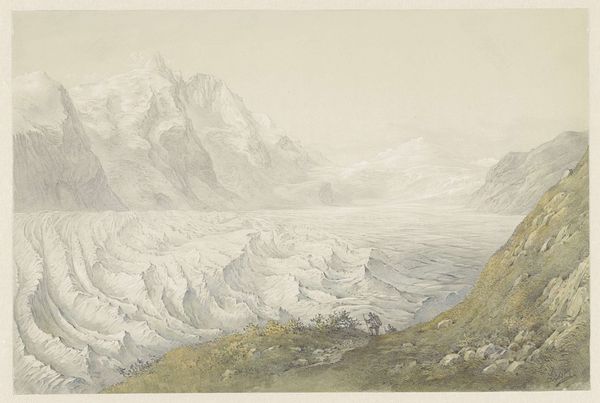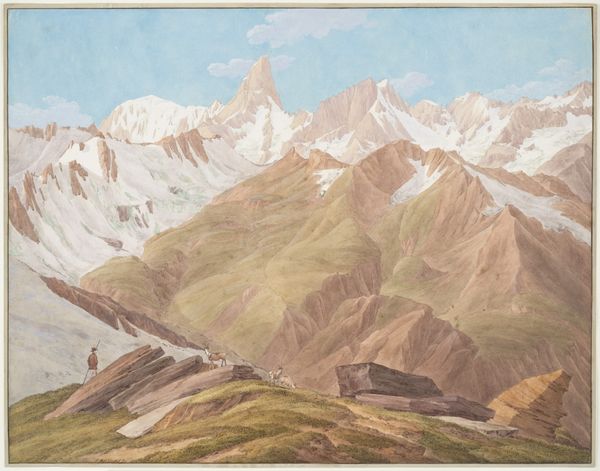
drawing, print, graphite
#
drawing
# print
#
landscape
#
pencil drawing
#
geometric
#
graphite
#
modernism
Dimensions: Sheet:432 x 330mm Image:330 x 254mm
Copyright: National Gallery of Art: CC0 1.0
Ella Sophonisba Hergesheimer created this image of Ranier National Park as an etching, a printmaking process that relies on acid to bite into a metal plate. The fine lines you see are the result of this corrosive action. The artist would have painstakingly covered the plate with a waxy, acid-resistant ground, and then scratched her design into it. The plate was then immersed in acid, which ate away at the exposed metal. This process could be repeated multiple times to achieve varying depths of line. Look closely, and you can see how the etched lines create a range of textures and tones. Hergesheimer skillfully uses the density and direction of these lines to convey the ruggedness of the landscape, the play of light and shadow on the mountains, and the textures of the trees and rocks. The way these lines are etched and placed into the plate determine the way the image looks as a whole. By understanding the labor-intensive process of etching, we can appreciate the skill and artistry that went into creating this image. It also reminds us that even seemingly simple landscape views are the result of human intervention and interpretation, challenging any easy separation between the fine arts and craft.
Comments
No comments
Be the first to comment and join the conversation on the ultimate creative platform.
